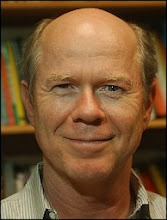New Strategies for Depression
Many of my clients see me because they are unable to break out of a depression. They often have been feeling blue, unmotivated, and unenergetic about life. They are typically self-critical and blame themselves for much of what is going wrong in their lives. Pessimism is a prominent theme.
In the brain depression has been found to be associated with hemispheric asymmetry. The left frontal lobe has most of our positive emotions and encourages us to approach what we want. The right frontal lobe has most of our negative emotions and motivates us to avoid what we don’t want. When beta is high and alpha low in the left frontal lobe we typically feel optimistic and generally content. During these times, beta is lower and alpha higher comparatively in the right frontal lobe. When this energy balance shifts, we lose that optimistic feeling and begin to feel more negative. When we can’t shift the energy back and get stuck in the right frontal lobe, we typically feel depressed, hopeless, and harbor self-hate. Hence, when we get depressed, there is a power outage in the left frontal. We have an increase in alpha and decrease in beta relative to the right side. I offer several interventions that help my clients reverse this shift and improve their mood.
The first is the Alpha-Stim SCS. It is FDA approved for the treatment of depression, anxiety, and insomnia. It stimulates the brain stem and helps it “reset the timing” of the brain. This adjustment has been shown to help rebalance the frontal lobes within a few weeks. I lease this unit out for clients to take home and use.
The second is brain wave biofeedback, also known as neurofeedback. I place the sensors over both frontal lobes and reinforce the brain when it moves towards increasing beta and decreasing alpha in the left frontal lobe relative to the right. It’s a simple operant conditioning model that allows the person to watch a DVD movie and be entertained while they train their brain. The movie stops and starts depending on whether the brain is moving towards balance or not.
Next is audiovisual entrainment (AVE) using the DAVID PAL. This unit has a setting that automatically drives the brain to increase beta in the left hemisphere while increasing alpha in the right. There is a setting for improving sleep as well. I lease out this unit for people to use during the week to speed up the progress of neurofeedback.
Next is the use of amino acid therapy using Neuroresearch. I place clients on a standard protocol that supports serotonin and dopamine neurotransmitter balance. After 3 weeks approximately 60% will show a relief in their depression. The other 40% will need a urine lab screening to determine changes in doses. For most clients, their depression is remediated within 6 weeks. These amino acid supplements do not interfere with antidepressant medications, but rather, increase their efficacy if you are on them.
Another intervention is dual brain therapy. I use a special pair of glasses that isolates the two separate personalities located in the one brain. Roger Sperry, MD won the Nobel Prize in 1980 for his research in the split brain. The media focused on the functions of the left and right hemispheres only, even though he discovered there were separate personalities as well. By using these glasses, some of my clients are able to quickly discern the differences between these two sides. It often comes as a surprise to them that one side is depressed and the other side isn’t. It explains how we can have arguments inside our head and even disagree with ourselves. It helps my clients understand why they can decide to do one thing, then wind up doing the opposite. The truth is that both sides don’t always agree, and when one is depressed, that side takes control over behavior. The strategy then becomes strengthening the “healthier” side and teach it to take control over behavior and mood. I have used this method successfully for the past 7 years.
Another approach I use is to explore core, life limiting, beliefs that dominate a person’s life. There are 19 common ones, such as “Whatever I do isn’t good enough.” “I’m unlovable.” “I have to hold my feelings in.” “I don’t fit in.” “I have to take care of others first.” I help a person uncover these life long distorted beliefs and use them as the focus, combining Voice Therapy (see Robert Firestone), EMDR, and AVE with specially selected colored lights. Some of my clients have achieved rapid changes from this protocol.
Sometimes, using just one of these methods achieves results and the depression lifts. Other times, clients may need a combination of 2 or more approaches. As no two people are alike, I tailor my methods to suit the needs of each individual. I attempt to match my intervention to their personality, history, symptoms, and what I believe would work best for them.


0 Comments:
Post a Comment
<< Home